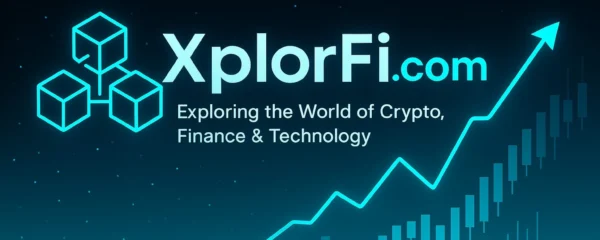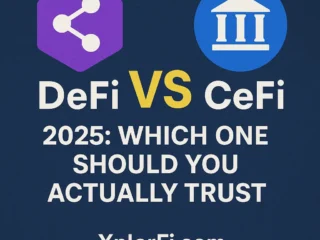Low-Cost Index Funds: The Best Choice for Investors 2025?

Why Low-Cost Index Funds Became the “Go-To” Choice
Low-cost index funds have long been the comfort food of the investing world, cheap, filling, and dependable. Investors grab them like instant noodles after payday, believing they’ll always fuel steady long-term gains.
These funds, like the legendary S\&P 500 ETF Trust, promise market-wide exposure without the stress of picking stocks one by one. That “set it and forget it” vibe is what makes them so popular.
But here’s the kicker: it’s like thinking Layla in Mobile Legends can just auto-attack her way to victory without ever repositioning, sooner or later, you realize there’s a flaw.
The Hidden Weakness in Low-Cost Index Funds
Low-cost index funds aren’t as “passive” as the label suggests. To stay aligned with the index, they gotta shuffle stocks in and out like a DJ switching tracks mid-party. The issue? They often end up buying stocks after a hype rally and selling when prices dip, classic “buy high, sell low.” That’s a straight-up drag on returns.
Imagine Balmond farming creeps only after other heroes already cleared them, dude’s wasting time and XP while thinking he’s grinding efficiently.
When Additions Become Flip-Flops in Low-Cost Indexes
Research from Rob Arnott and Lillian Wu points out that many stocks in indexes like the S\&P 500 shine bright before getting added, then turn into duds afterward. Some even play ping-pong, added, dropped, then added again. This churn creates sneaky performance leaks.
It’s like Gusion dashing in and out of a fight, wasting skills on minions instead of focusing on enemy heroes, flashy, but low impact.
The Cost to Investors Using Low-Cost Index Funds
So how bad is this flaw? Arnott and Wu found it trims up to 0.69 percentage points annually from investor returns. That may sound small, but compound it over 30 years, and your portfolio ends up looking like Clint after his bullets run dry, still standing, but missing serious firepower.
Think of it like Aldous charging across the map for a flashy ult, only to find the enemy already teleported back to base. Lots of energy spent, little payoff.
Two Funds Hiding in One Low-Cost Index
What’s wild is that a low-cost index fund is really two funds in disguise. About 95% of it behaves like a true passive beast, steady, predictable, cheap. But the other 5%? That’s a chaotic little monster mimicking active management, constantly chasing shiny new stocks. That tiny slice drags the whole squad down.
Imagine you’re drafting in Mobile Legends, and 95% of your team is meta picks… but one teammate insists on using Nana jungle. That single oddball throws off the entire comp.
A New Fix: Beyond the Traditional Low-Cost Index
To fix this flaw, Research Affiliates cooked up RACWI, the Research Affiliates Cap-Weighted Index. Instead of obsessing over stock prices, RACWI leans on fundamentals like cash flow, dividends, and sales. This keeps churn low and avoids “buy high, sell low” traps.
From 1991 to 2024, RACWI beat the S\&P 500 by an average of, you guessed it, 0.69 percentage points annually. That translates to about 23% more wealth after three decades.
Think of it as Kagura switching from spamming umbrellas randomly to placing them strategically, same hero, way smarter playstyle.
The RAUS ETF: A Low-Cost Index Upgrade
Research Affiliates didn’t stop at theory. They launched RAUS, an ETF that follows RACWI. Fees? Just 0.15% annually, with a free first year. That’s like getting your first epic skin in Mobile Legends with zero diamonds spent. RAUS aims to keep the passive investing benefits while ditching the sneaky drag of traditional index churn.
Picture Rafaela healing her squad for free during a team fight, everyone levels up without draining their wallets.
Why Low-Cost Index Investors Should Pay Attention
The lesson here is simple: just because something is low-cost doesn’t mean it’s flawless.
The churn from constant stock additions and removals eats away at returns like Ling draining mana from jumping around non-stop. Investors need to understand that a portion of their portfolio is unintentionally playing an active strategy, and not a very good one at that.
It’s like trusting Franco to always land his hooks, you’ll be disappointed more often than not.
Rethinking the Future of Low-Cost Index Investing
Index funds will remain popular, they’re still cheaper and easier than most alternatives. But with options like RACWI and RAUS, investors now have a chance to squeeze out extra gains without giving up the simplicity of passive investing.
The key is awareness: don’t just assume “low-cost index” equals “perfect strategy.” Always check under the hood.
Think of it like preparing for rank in Mobile Legends, you don’t just auto-lock your main hero. You scout the enemy draft, adapt, and pick wisely if you want that sweet Mythic rank.
Which one are you watching, Xplorianz? Drop your take on the most underrated pick this week in the comments!. Slide into our inbox Facebook, or tag us on X . Stay sharp, stay weird, and keep Xploring
Disclaimer:
This article is for informational and entertainment purposes only and does not constitute financial advice. Always do your own research (DYOR) before making any investment decisions, your money, your call. Crypto’s wild, so stay sharp out there!
25 Financial Habits Through Good Money
Tennessee Man Charged in $10M+ Theft from George Jones’ Widow
5 Simple Ways to Ease Financial Stress Now








No Comments